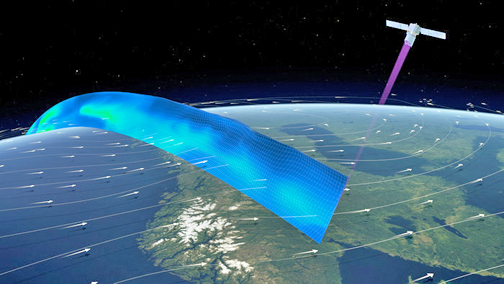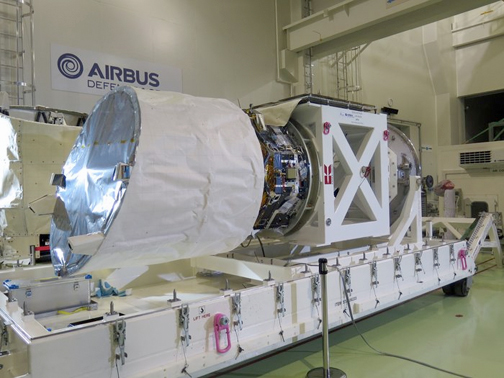

One of the trickiest pieces of space tech that has ever been developed—Aladin—is now ready to meld within the Aeolus satellite.

The ADM-Aeolus mission will not only advance our understanding of atmospheric dynamics, but will also provide much-needed information to improve weather forecasts. The satellite carries the first wind lidar in space, which can probe the lowermost 30 km of the atmosphere to provide profiles of wind, aerosols and clouds along the satellite’s orbital path. The laser system emits short powerful pulses of ultraviolet light down into the atmosphere. The telescope collects the light that is backscattered from air molecules, particles of dust and droplets of water. The receiver analyses the Doppler shift of the backscattered signal to determine the speed and direction of the wind at various altitudes below the satellite. These near-realtime observations will improve the accuracy of numerical weather and climate prediction and advance our understanding of atmospheric dynamics and processes relevant to climate variability.
This artistic rendition is courtesy of ESA/ATG medialab.
This instrument has been years in the making—Aeolus will be the first satellite to probe wind activity across the globe. These vertical slices through the atmosphere, along with information on aerosols and clouds, will advance knowledge of atmospheric dynamics and contribute to climate research. As Aeolus will deliver measurements almost in real time, the satellite is also set to provide much-needed information that should improve weather forecasts.
The Aladin instrument was designed by Airbus Defence and Space in France and incorporates two powerful lasers, a large telescope and extremely sensitive receivers. The laser generates ultraviolet light that is beamed toward Earth. This light bounces off air molecules and small particles, such as dust, ice and droplets of water, in the atmosphere. The fraction of light that is scattered back towards the satellite is collected by Aladin’s telescope and then measured.
Developing advanced new space technologies is never easy and the Aeolus mission has certainly faced a number of challenges. For instance, the optics have to survive exposure to high-intensity laser pulses for at least three years in the unforgiving environment of space. Developing optics that could withstand these extremes took far longer than anticipated.Nevertheless, recent tests have shown that such technical problems have been resolved.

After many years in development, Aladin – the Doppler wind lidar to be carried on the Aeolus satellite – is ready to be shipped from Toulouse, France, to the UK to be installed on the satellite in preparation for liftoff by the end of 2017.
Photo is courtesy of Airbus Defence and Space.
Prof. Erland Källén, Director of Research at the European Centre for Medium Range Weather Forecasts, related that the Aeolus mission will provide wind observations that are unique with respect to the current global observing system capabilities, with observations filling a gap in the global observing system. In spite of the many years of delay, he added, there is still a need for the mission the expectation is that Aeolus will have a big impact on weather forecasting. He further commented that, in the Tropics, wind information dominates atmospheric analyses and this influences the quality of weather forecasts for Europe for the week ahead. Wind information from Aeolus is also expected to be important over oceans in both hemispheres for determining the position and evolution of jet streams and atmospheric fronts.

